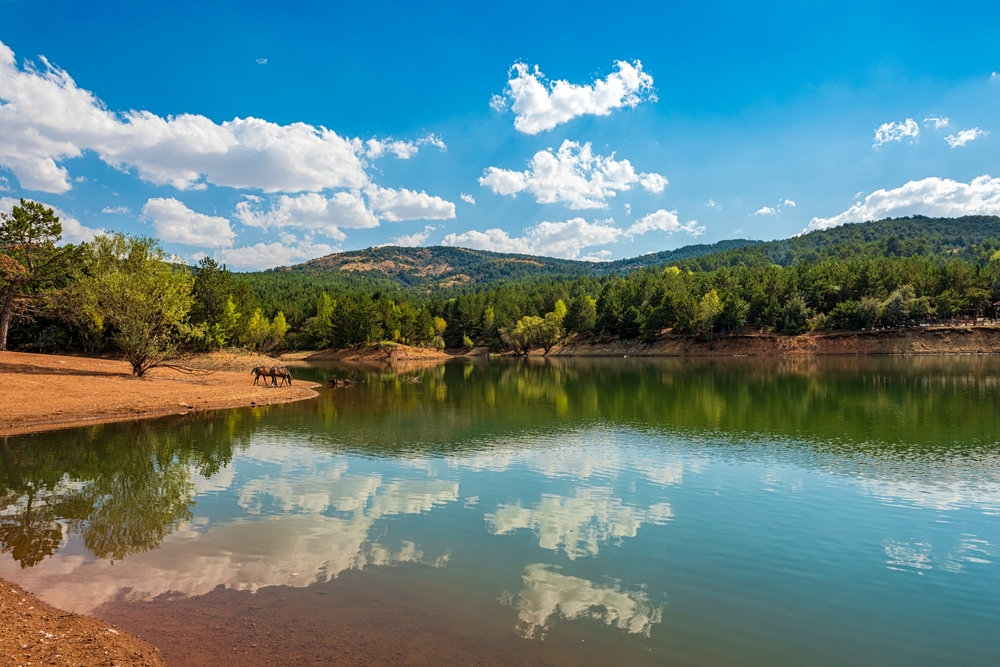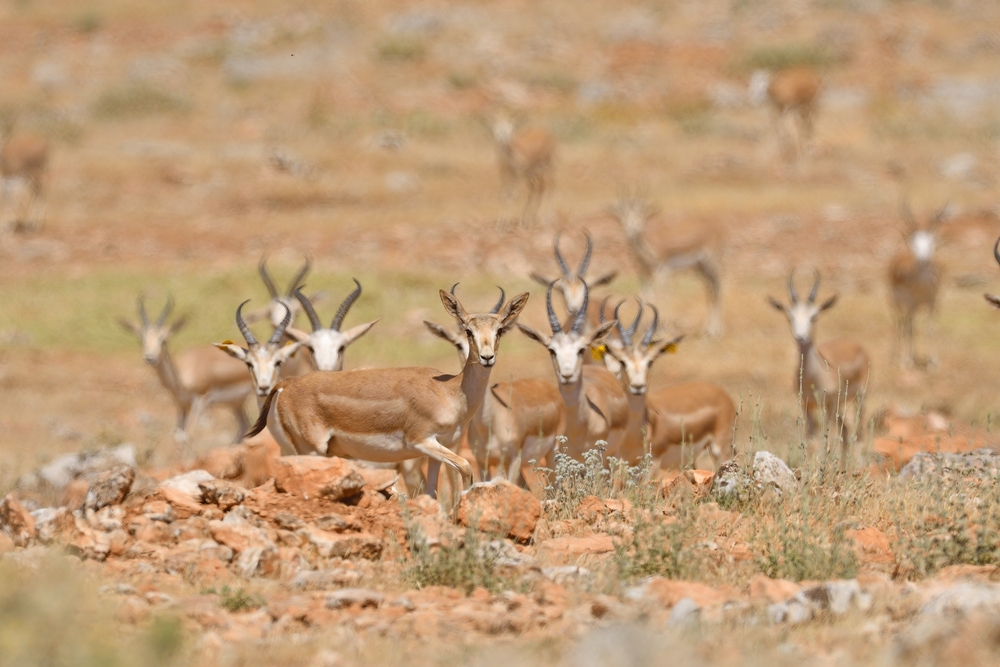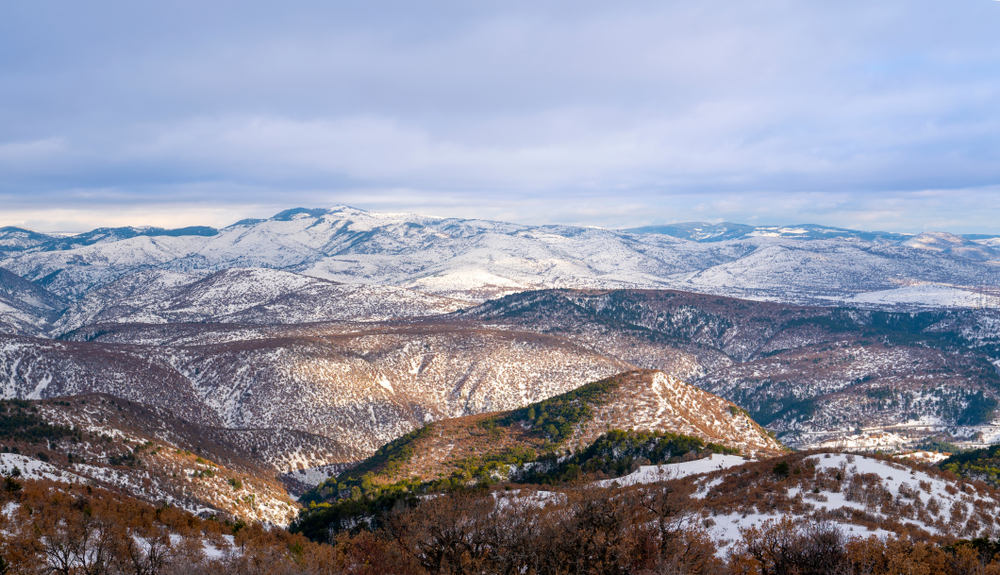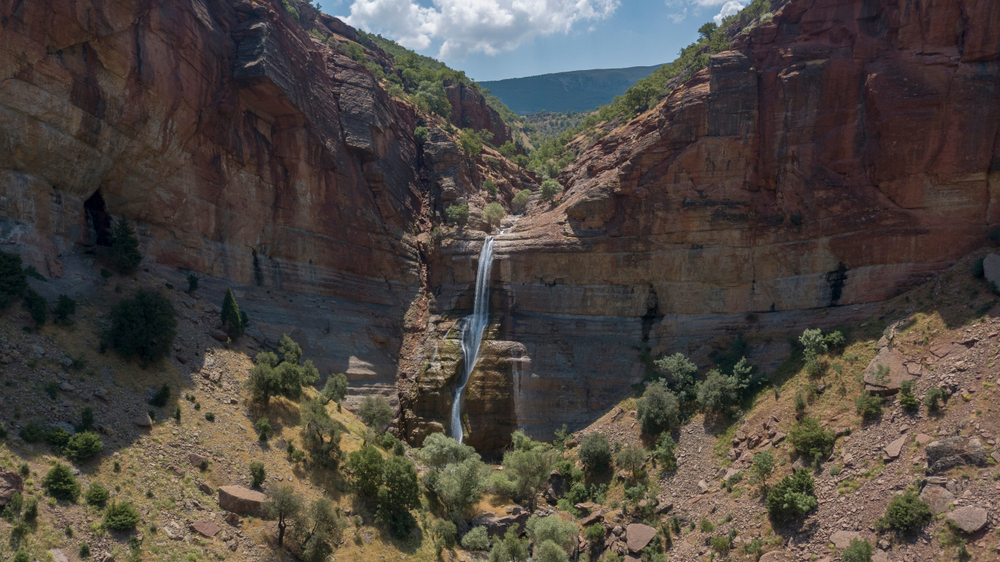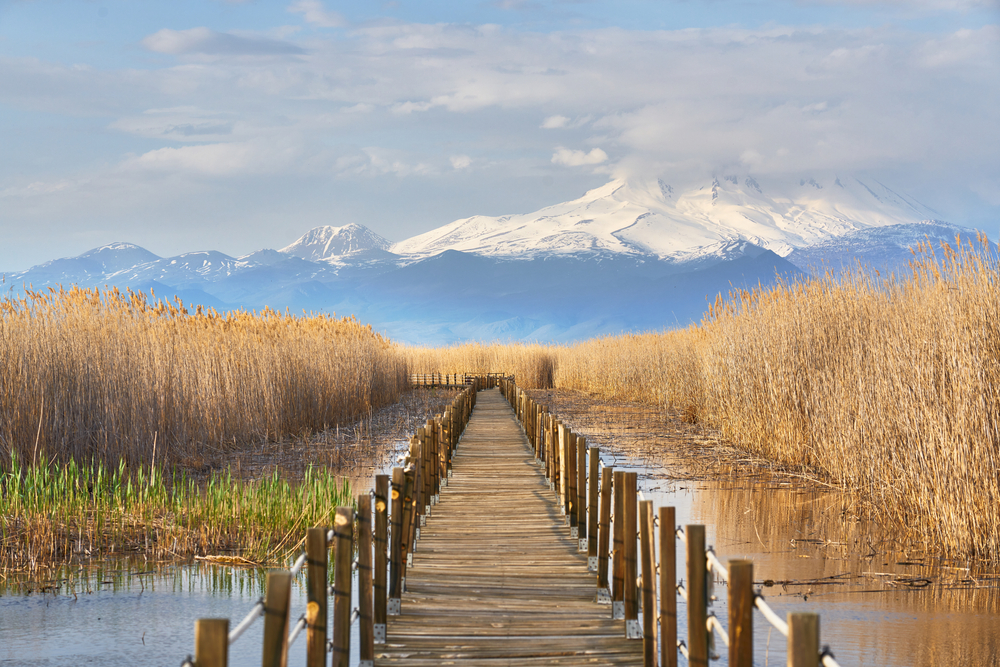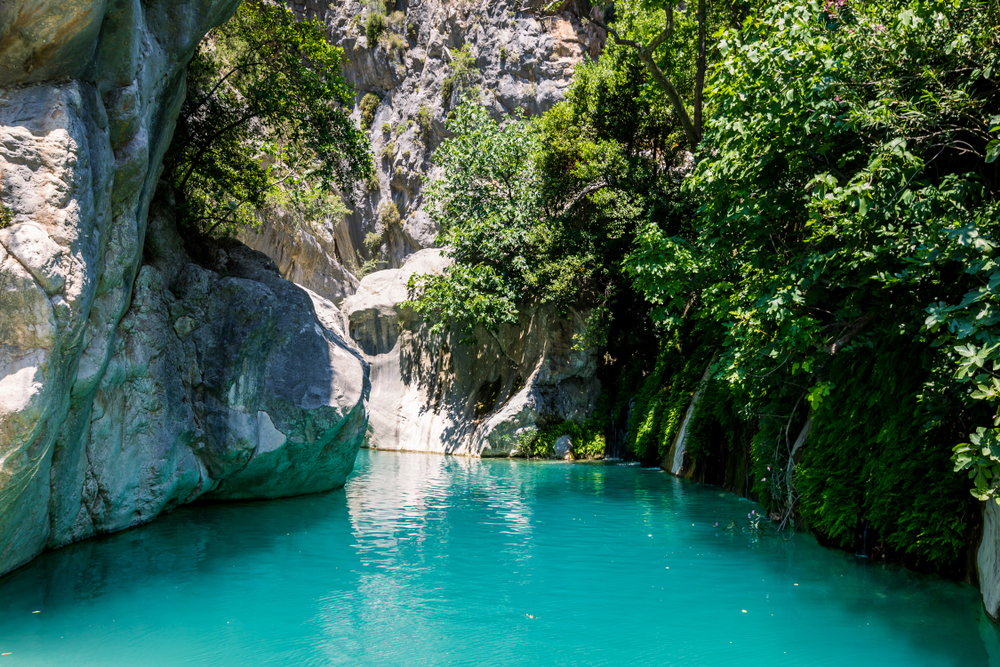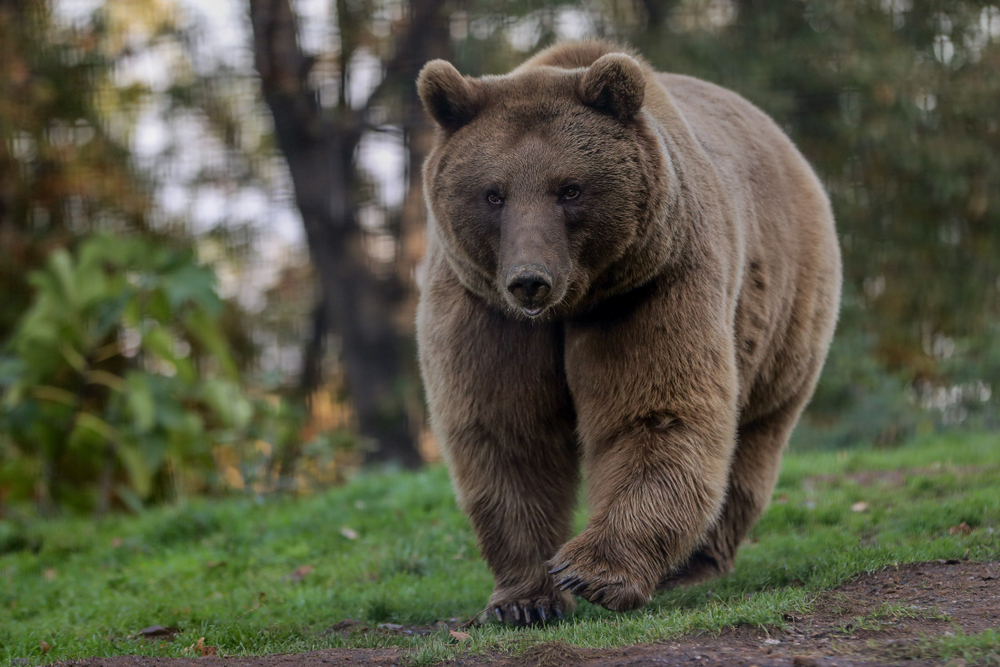Uludağ Overview
Uludağ National Park, known in Turkish as Uludağ Milli Parkı, is located in northwestern Turkey within Bursa Province. Spanning an area of approximately 52.6 square miles (136.8 square kilometers), the park centers on Uludağ Mountain, the highest peak in western Anatolia at 8,343 feet (2,543 meters).
This iconic mountain dominates the skyline and is visible from the Marmara Sea on clear days. The park features a diverse and dramatic landscape of steep alpine slopes, glacier-carved valleys, high plateaus, and thickly forested hillsides.
Vegetation zones shift with elevation, ranging from dense stands of fir, beech, and Scots pine in lower areas to juniper and alpine meadows filled with wildflowers in the highlands. In spring and summer, the slopes bloom with endemic plants, while autumn brings vibrant foliage and winter covers the peaks in deep snow.
The biodiversity within Uludağ National Park is among the richest in the region, making it a haven for wildlife. Mammals such as red deer, wild boars, brown bears, lynxes, and wolves inhabit the remote forests, though many are elusive and rarely seen by visitors. Smaller species like foxes, squirrels, and martens are more commonly spotted.
Bird species flourish in the varied ecosystems, including golden eagles, woodpeckers, Eurasian nuthatches, and owls. The high alpine meadows and wetlands support amphibians and reptiles, as well as a range of insect life that supports the park’s rich ecological web. The presence of endemic and rare plant species, some unique to Uludağ’s subalpine areas, further highlights its biological importance.
A popular and defining feature of the park is its role as Turkey’s premier winter sports destination. The Uludağ Ski Center offers a wide range of ski runs, modern lifts, and snow-covered slopes that attract thousands of visitors each season.
Beyond skiing and snowboarding, winter visitors enjoy snowshoeing, sledding, and scenic rides on the historic Uludağ cable car. In the warmer months, the park transforms into a destination for hiking, picnicking, and mountaineering. Well-marked trails lead to alpine lakes, waterfalls, and summits, offering panoramic views of the surrounding plains and distant seas.
Visitors engage with Uludağ National Park year-round through a range of activities. In summer, hiking and camping are popular, with trails suitable for both casual walkers and experienced trekkers. Designated picnic spots and forest clearings make the park ideal for day trips from nearby Bursa. In winter, the ski resort offers hotels, lodges, rental shops, and restaurants that serve both local and international tourists.
The scenic cable car, one of the longest in the world, provides a memorable and convenient way to ascend the mountain, offering expansive views of the forested valleys and urban landscapes below.
Conservation challenges at Uludağ include the pressure of heavy tourism, especially during peak winter and summer seasons. Urban encroachment, waste management, and habitat disturbance remain ongoing concerns.
However, the park benefits from strong environmental regulations and active cooperation between government agencies, local authorities, and conservation organizations. Educational programs, strict zoning, and ecological monitoring have helped balance recreation with preservation.
Uludağ National Park continues to serve as a model for integrating tourism with environmental stewardship in one of Turkey’s most beloved natural landscapes.











































































